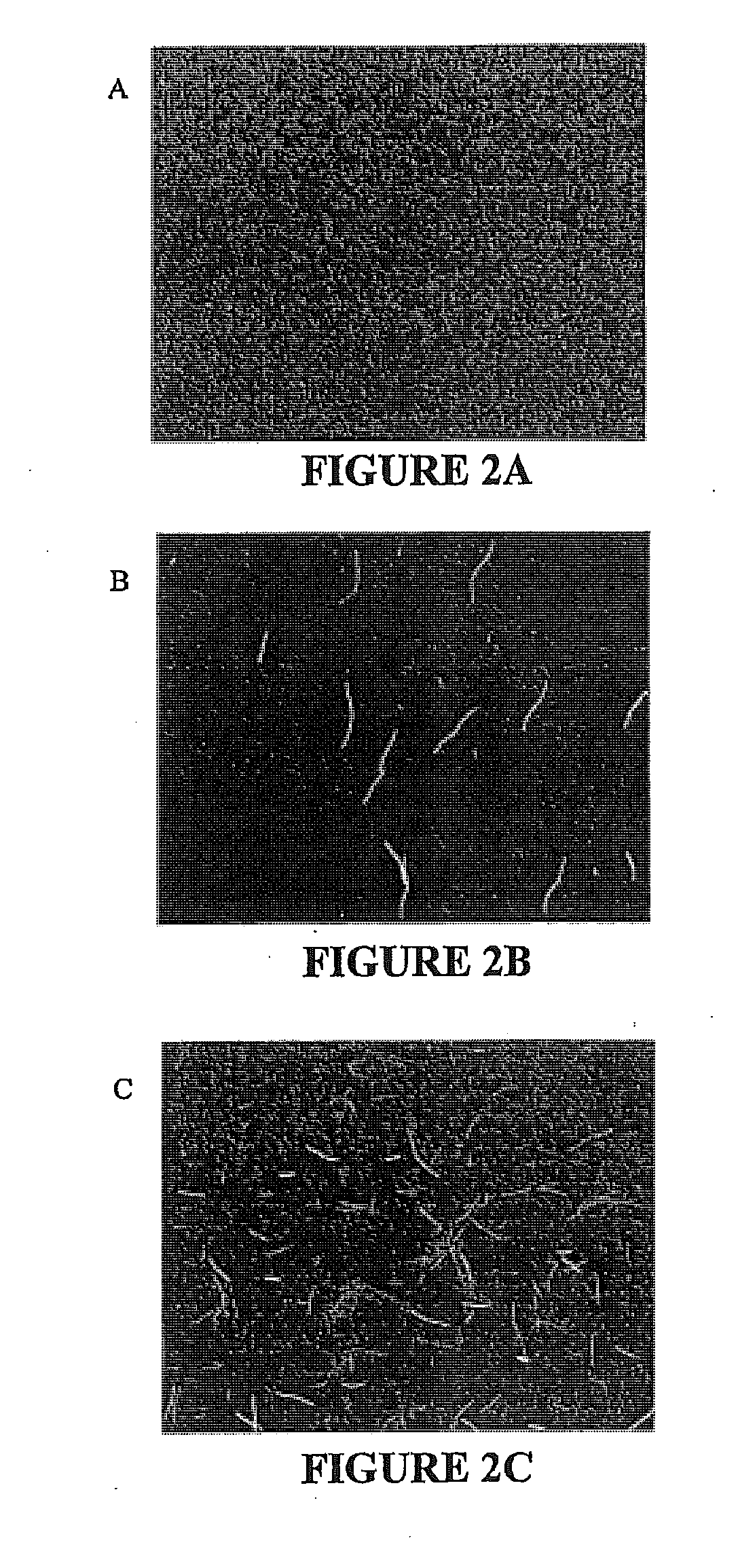Antibacterial and plasmid elimination agents
- Summary
- Abstract
- Description
- Claims
- Application Information
AI Technical Summary
Benefits of technology
Problems solved by technology
Method used
Image
Examples
example 1
of tmRNA Inhibitors as Antibacterial and Plasmid Elimination Agents
[0093]The experimental strategy for this proposal is to engineer fluorescent reporters for the tmRNA pathway and conduct a genetic screen for inhibitors from libraries of cyclic peptides expressed in vivo. Inhibitors will be optimized by mutagenesis followed by re-screening for high-affinity inhibitors in model organisms. Initial characterization will be performed on opportunistic pathogens and model bacteria that can be handled under BL1 and BL2 conditions in the laboratory. Optimal cyclic peptides will then be tested for antibiotic and plasmid elimination activity against B. anthracis and an array of bacterial pathogens. A pilot genetic screen and characterization of ClpXP inhibitors has been performed to validate key methods.
[0094]Development of reporters for the tmRNA pathway: To probe the activity of the tmRNA pathway, fluorescent reporters will be developed for tmRNA activity and proteolysis of tagged proteins ...
example 2
mRNA-Tagged Proteins a Pathway to New Antibiotics
[0133]SsrA, or tmRNA, is a small RNA that adds a short peptide tag to the C terminus of nascent polypeptides on stalled ribosomes. This tagging pathway is required for development and virulence in many species, and in Caulobacter crescentus it is required for normal cell cycle progression. In both C. crescentus and E. coli, most SsrA tagged proteins are rapidly degraded. Their fate depends on interactions with at least 4 proteases and 2 proteolytic adaptor proteins. In E. coli, most tagged proteins targeted for degradation bind to the proteolytic adaptor protein SspB, which delivers the substrate to the ClpXP protease. ClpXP is essential in C. crescentus, and we have identified a protein, SmpD, that performs the same functions as SspB. SmpD binds to the SsrA-encoded peptide tag in vitro, and in a strain deleted for smpD the half-life of tagged proteins is increased 3.5-fold in vivo. mRNA profiling and Western blot experiments demonstr...
example 3
rial Cyclic Peptides that Inhibit the ClpXP Protease
[0136]To determine if inhibitors of ClpXP would have antibacterial activity against species that require this protease, a bacterial strain in which ClpXP is not essential was used to screen for cyclic peptides that block degradation of tmRNA-tagged proteins. Synthetic versions of these inhibitors were then tested for bactericidal activity against Caulobacter crescentus, a gram-negative bacterium in which clpX and clpP are essential.
Materials and Methods
[0137]Plasmids and bacterial strains: A GFP-based reporter for the proteolysis of tmRNA tagged proteins was constructed by amplifying the egfp gene from pEGFP-N2 (BD Biosciences Clontech) using PCR with primers that add the codons for the tmRNA tag (AANDENYALAA; SEQ ID NO: 7) at the 3′ end of the gene before the stop codon, and cloning the product into pTrc99a. A similar strategy was employed for the control reporters containing egfp with no tag and egfp with the DD tag (AANDENYALDD;...
PUM
| Property | Measurement | Unit |
|---|---|---|
| Fraction | aaaaa | aaaaa |
| Molar density | aaaaa | aaaaa |
| Molar density | aaaaa | aaaaa |
Abstract
Description
Claims
Application Information
 Login to view more
Login to view more - R&D Engineer
- R&D Manager
- IP Professional
- Industry Leading Data Capabilities
- Powerful AI technology
- Patent DNA Extraction
Browse by: Latest US Patents, China's latest patents, Technical Efficacy Thesaurus, Application Domain, Technology Topic.
© 2024 PatSnap. All rights reserved.Legal|Privacy policy|Modern Slavery Act Transparency Statement|Sitemap



